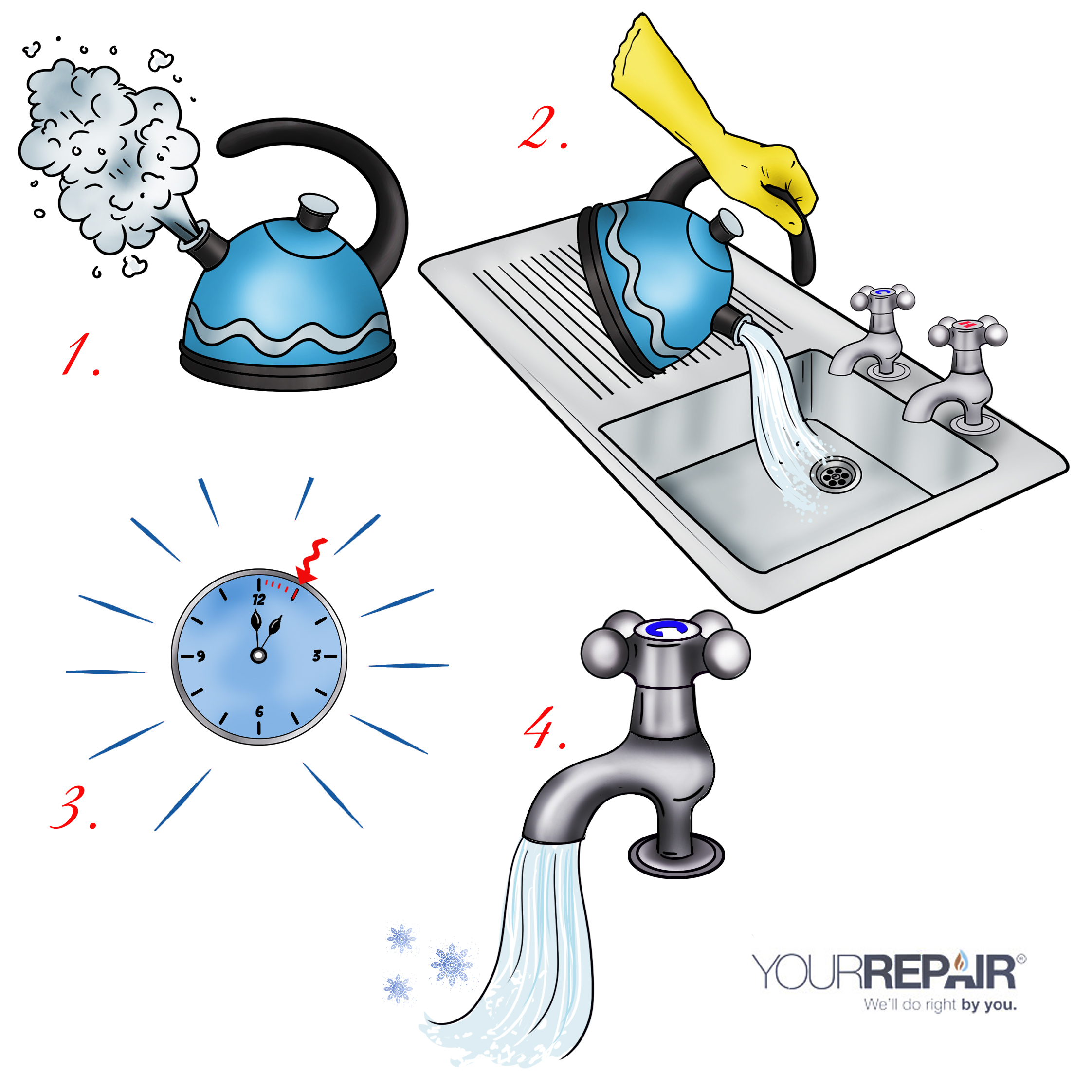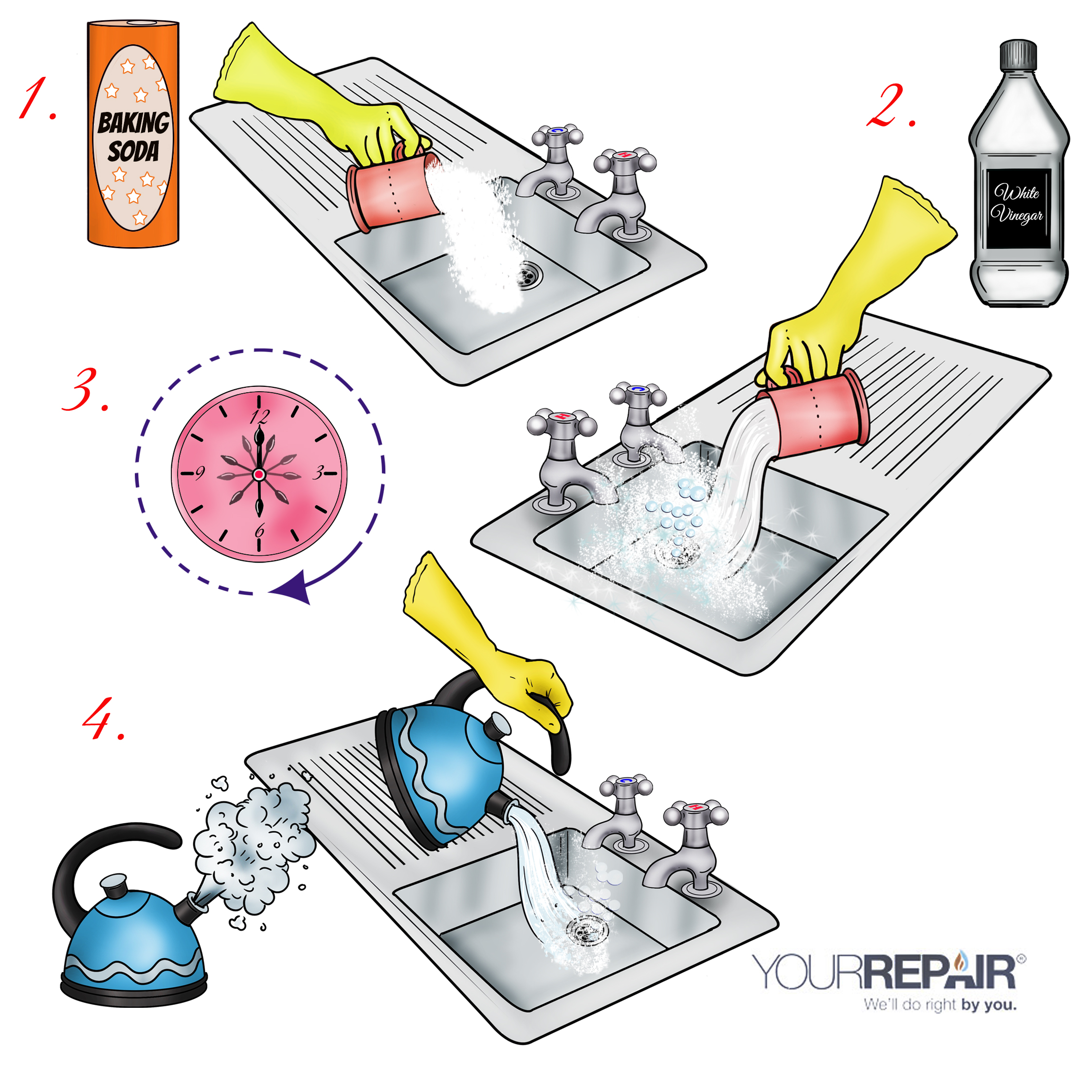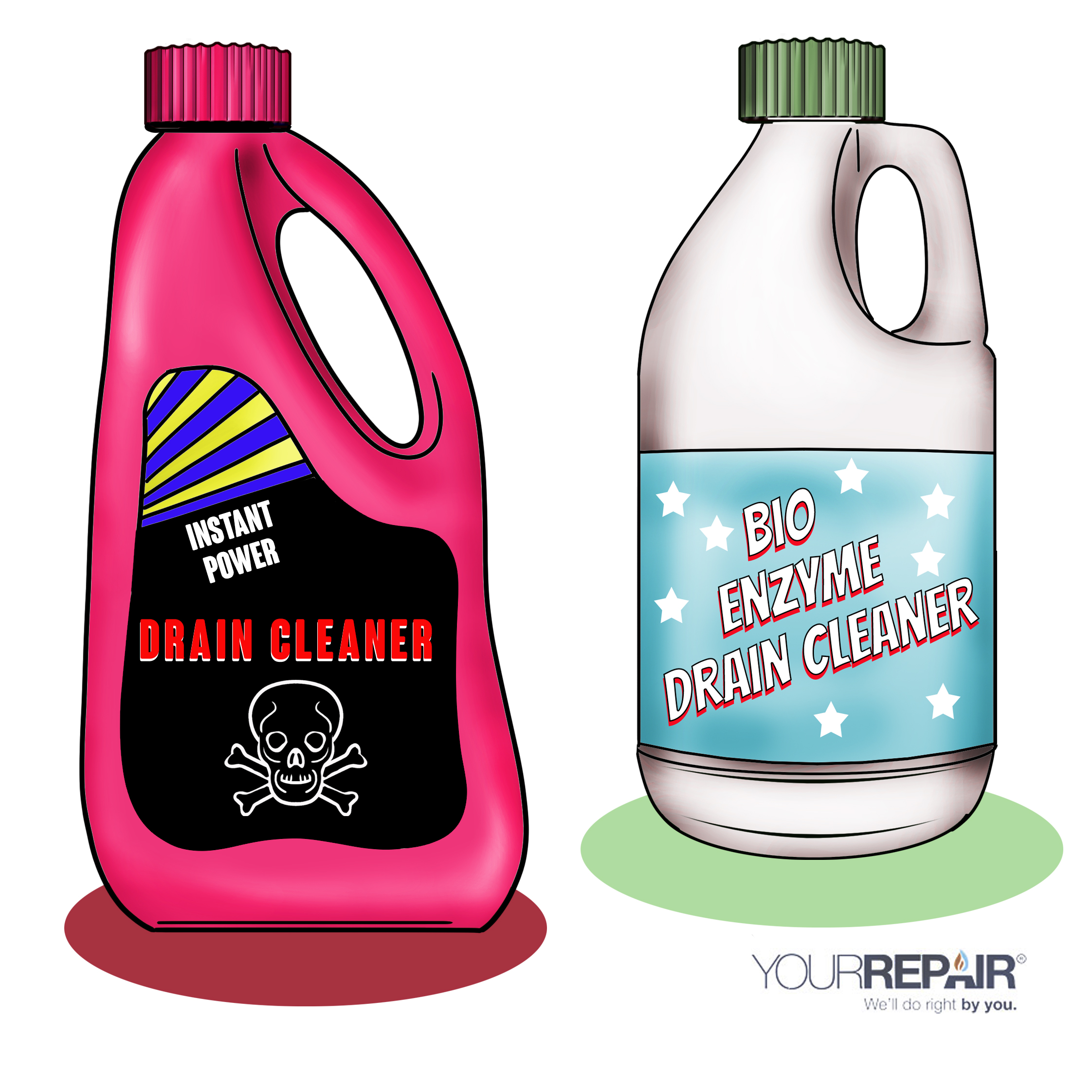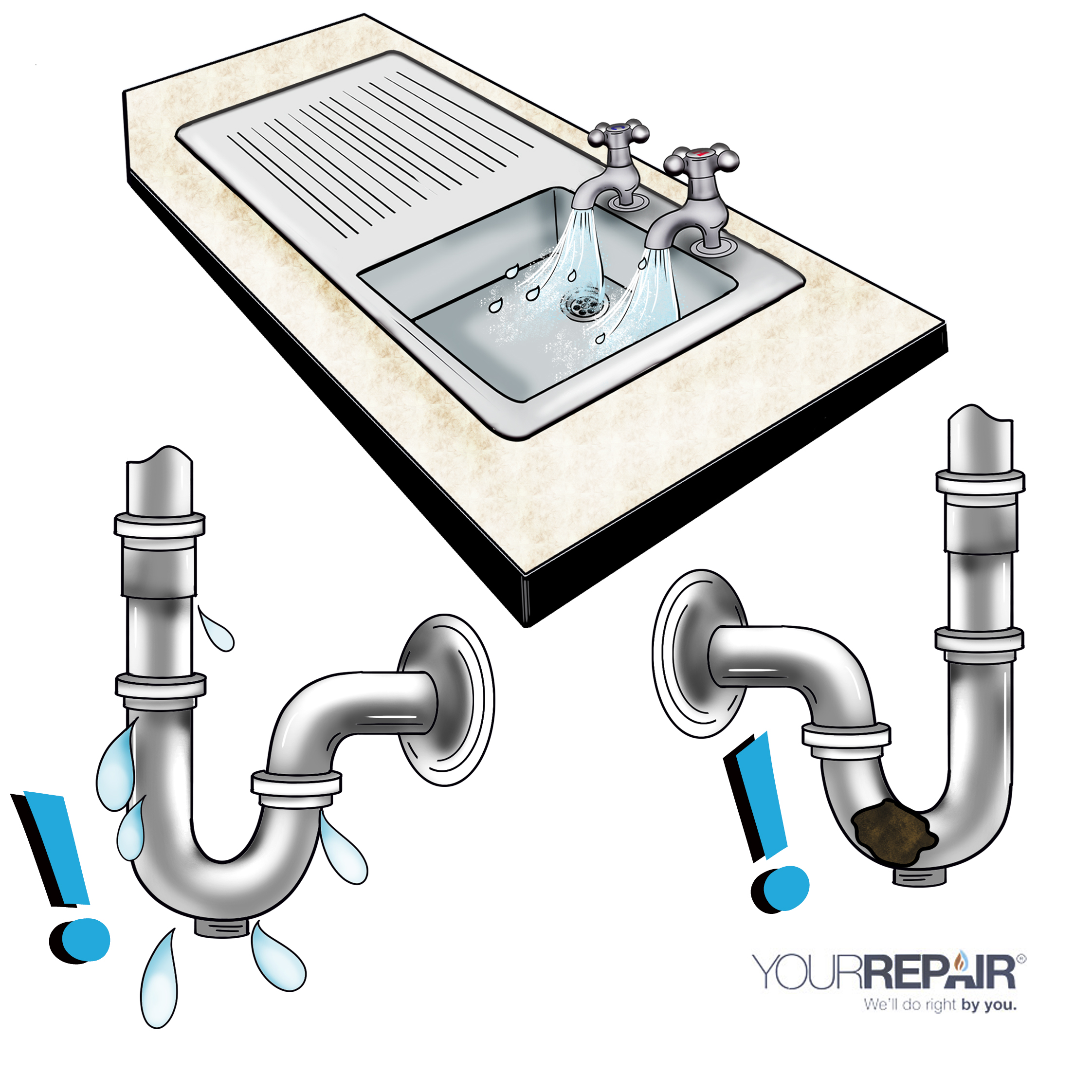Get Rid of Stinky Kitchen Sink Smells
If you notice a nasty smell lingering in the kitchen, even after a big clean, you may need to look to the plughole. A stinky kitchen sink is enough to put anyone off their food but what can you do about something you can’t even see? In this article, we’ll look at the top causes of smells coming from your kitchen sink and what you can do to get rid of them and stop them coming back.
Where do kitchen sink smells come from?
There are two main reasons why your kitchen sink is giving off a foul smell.
- If there is a build-up of food and debris in your pipes, over time this can start to decay and smell. Anything you put down the sink, other than water, can get stuck to the pipes or the U-bend. As this food and debris decay, the smell will rise through the pipes.
- If there is no water in the U-bend you could experience smells coming up from the sewer pipes. This can happen if you have a leak in your U-bend or if the water evaporates in hot weather.
- In rare cases, your kitchen sink may smell due to a build-up of mould.
Steps to take if your kitchen sink smells
The first step in treating your kitchen sink smell problem is to determine the cause:
- If the water is draining slowly or not at all, then debris could be clogging the pipe and causing the smell.
- If the sink smells like rotting food, then you have a build-up of food, fats and oils in your pipes.
- If the sink smells like rotten eggs, you have sewer gases escaping into your home due to a problem with your U-bend.
Once you know the cause of the smell in your kitchen, you can use one of the methods outlined below to fix the problem and prevent it returning. If you have tried all of the methods below and you still cannot get rid of the smell, you may need to call in the professionals.
How to stop the kitchen sink stink
Kitchen sink smells won’t go away on their own. Once you know the cause, you can use one of the methods below to remedy the problem. You can choose from a DIY method or a chemical cleaning method to clean your pipes. We also have some tips for fixing problems with your U-bend.
DIY drain cleaning
The following methods use items you may already have in your store cupboard to help get rid of kitchen smells.
Boiling water

If the blockage is caused by a build-up of fats and oils, then pouring boiling water down your drain could be all you need to do.
- Fill up the kettle or a pan with water and bring it to the boil
- Slowly pour it down the plughole, being careful not to splash yourself
- Wait 5 minutes
- Run the cold tap to force the oil to congeal and flush away
White vinegar

Vinegar is a popular cleaning product as it is cheap, readily available and a natural odour killer.
- Pour half a cup of vinegar down the plughole
- Leave it to stand for 30 minutes, make sure you don’t use the sink during this time
- Run the hot water tap to flush the pipes
Baking soda and vinegar

If you need more power to shift the blockage, try mixing vinegar with baking soda for a deodorising combo.
- Pour half a cup of baking soda down the plughole. Pour it slowly so that it goes down the drain instead of sitting in the sink.
- Now pour a cup of vinegar down the plughole. You should hear it fizzing and see it foaming.
- Leave the solution to stand for a few hours and make sure you don’t use the sink during this time.
- Fill the kettle and bring it to the boil. Pour this water down the plughole to flush away any remaining debris.
Chemical drain cleaners

You can find chemical drain cleaners in most supermarkets and DIY shops. You can choose between a bio-enzyme cleaner or a ready-made drain cleaner to flush away any debris.
- A bio-enzyme drain cleaner works by using enzymes to “eat” the food and remove the blockage. This is eco-friendly and non-toxic so it is ideal if you are concerned about the environmental impact of pouring chemicals down the drain.
- A ready-made drain cleaner will use chemicals to clear the blockage and remove the smell. As these contain chemicals they can be dangerous. It’s important to follow the instructions on the packaging when using chemical cleaners.
Fix problems with the U-bend

The U-bend is your first line of defence against sewer smells which is why it is sometimes known as a sewer gas trap. If you have tried the methods above and you still have a bad smell coming from your kitchen sink, it might be time to check the U-bend. If it smells like rotten eggs, there is a good chance your U-bend is to blame.
The U-bend needs water to work effectively. If you have been away on holiday and you haven’t used your sink for a while, the water in your pipes may have evaporated. All you need to do is run your taps to refill with water.
Another potential problem is a U-bend leak. Check under your sink for signs of a leak. If you have damp patches under your sink, you may need to call a plumber. If you’re a YourRepair home and boiler care plan customer, this may be included in your plan.
If there is an obstruction in the U-bend, you will need to remove the U-bend and clean it with a wire brush.
How to stop kitchen sink smells in the future
Once the smell in your sink has gone away, you’ll want to take steps to stop it from happening again. Try the following to keep odours away:
- Use a drain screen to prevent large pieces of food going down the plughole
- Avoid putting oil or grease directly down the plughole
- Pour leftover water from the kettle down the plughole periodically to kill any bacteria
- Get into the habit of pouring baking soda down your plughole once a week and when you are going away.
- Call in the professionals to deal with persistent smells.
Need to call in the professionals?
If you have tried everything above and you still can’t get rid of the bad smell from your kitchen sink, it’s time to get professional help. With the home and boiler care plan from YourRepair, you’ll be covered for everything from your boiler to your kitchen sink.

